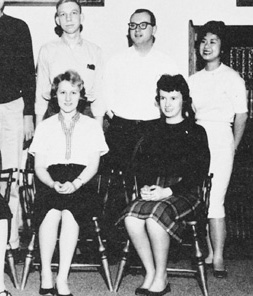|
GOLDSEA |
ASIAMS.NET |
ASIAN AMERICAN WONDER WOMEN
THE HUSTLER
PAGE 7 OF 12
He began his quest in 1968 by taking over a tiny company called Microwave
Communications Inc. to serve as the core of his contemplated long-distance
service.
"One time Sue was on a flight to Washington," Richard recounts. "An investment banker stopped
her and said, 'I knew your husband twenty-some years ago when he
had an office in New York with one secretary. In the back he had
a bunch of computers. We wanted to find out what he was doing.
He said, 'I'm going to start a telephone company.' Everybody thought
he was stark raving mad!"
"It's like somebody saying "I want to build a car and compete against General Motors,"
Richard says, chuckling with some satisfaction at the memory of
his late brother-in-law's triumph. "Only in America! He was determined.
And AT&T fought him tooth and nail. They played dirty tricks on
him like you couldn't believe. When he faced AT&T in the courts
in Chicago, they'd come in with 30 lawyers. It's just unbelievable
how anyone could beat an outfit like that. At that time it employed
so many people that the word was that everyone had a relative working
for AT&T." Prior to the 1984 breakup, AT&T employed one in every
500 American workers. Many of those quarter million people felt
that MCI's trustbusting crusade threatened their job security.
McGowan sometimes got death threats, Richard recalls. "One time
I was in Tucson with him, and my god, he had awful high security!
A former FBI guy was his head of security."
In 1973 MCI won approval to sell long-distance service between
Chicago and St. Louis. Given AT&T's monopoly at the time, MCI's
customers were people disenchanted with AT&T service. This discontent
gave McGowan the legal leverage to argue that the AT&T monopoly
resulted in poor service at high rates. McGowan filed an antitrust
suit seeking to break it into independent regional companies and
a single long-distance carrier against which MCI and, later, Sprint
and others, could compete on a level playing field.
For 16 years AT&T fought fiercely, arguing that a breakup would create telecommunications
chaos with unreliable, overpriced service. Not until 1984, did
the colossus cave in to pressures brought to bear by a determined
McGowan and the federal government. It finally agreed to divest
its regional businesses in the form of seven Baby Bells. The road
was paved for a telecommunications revolution that dramatically
raised efficiency and lowered the cost of long-distance service,
and later, of local toll service. Between 1984 and 1995, actual
long distance rates have gone down 50% in real terms.
[CONTINUED BELOW]
What began as a friendship in 1980 blossomed into romance. So preoccupied had Sue Ling Gin
and Bill McGowan been with their work that neither had ever married.
At that stage of their lives, neither was willing to compromise
their ambitions to settle down together to raise a family. Gin
wasn't anxious to backburner her own career to become a McGowan
satellite, but the five-year long-distance courtship gave her ample
reason to fly frequently between Chicago and Washington D.C. where
MCI headquarters was located. Her relationship with the celebrated
giant-killer seems to have given her new access to the Washington
establishment.
One morning in 1982, in her capacity as one of the minority advisers for the Reagan administration,
Gin flew out of Chicago's Midway Airport on a Midway Airlines shuttle
to Washington D.C. One bite of her in-flight breakfast revealed that
it was still partially frozen. Most would have been content to demand
a replacement meal and add the incident to their repertoire of road
warrior stories. To Gin it seemed the ideal entree into the in-flight
catering business. She promptly wrote a letter to Midway's chairman
who granted her a meeting. By the time she finished her pitch, the business
was hers. That single multi-million dollar contract gave Flying Food
Fare a lucrative start in the institutional catering business.
PAGE 8
PAGE 1 |
2 |
3 |
4 |
5 |
6 |
7 |
8 |
9 |
10 |
11 |
12 |
|
|
|
|

<

Sue Gin left Aurora College after one semester.
|
|
"Her relationship with the celebrated giant-killer seems to have given her new access to the Washington establishment."
|
CONTACT US
|
ADVERTISING INFO
© 1996-2013 Asian Media Group Inc
No part of the contents of this site may be reproduced without prior written permission.
|







